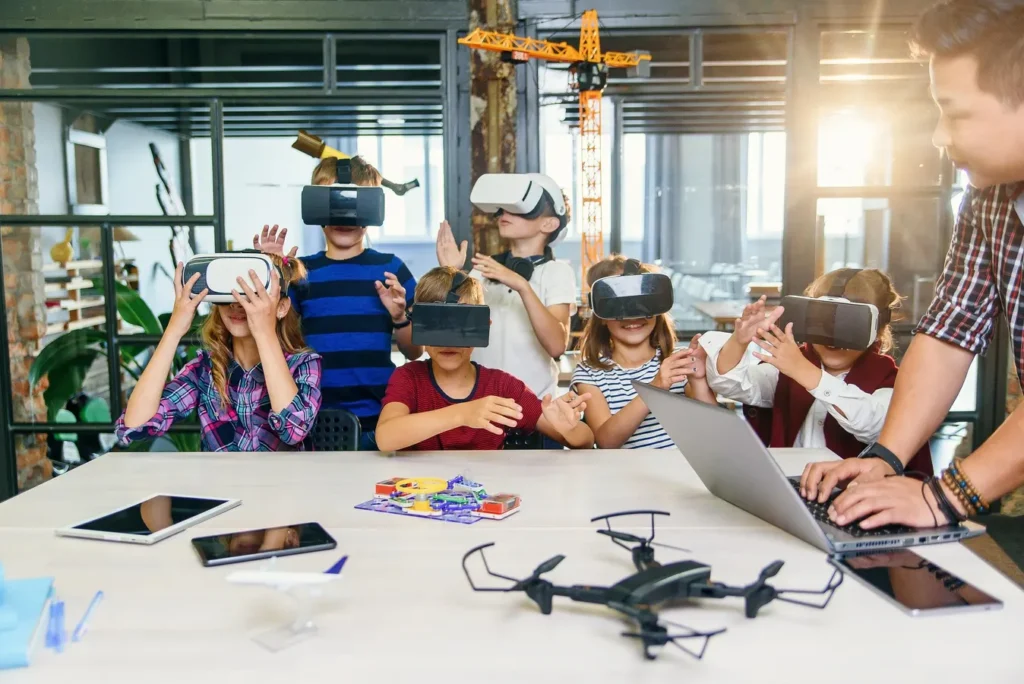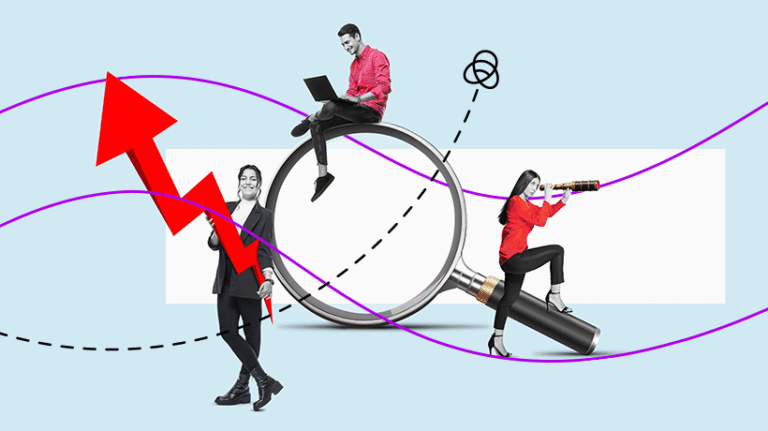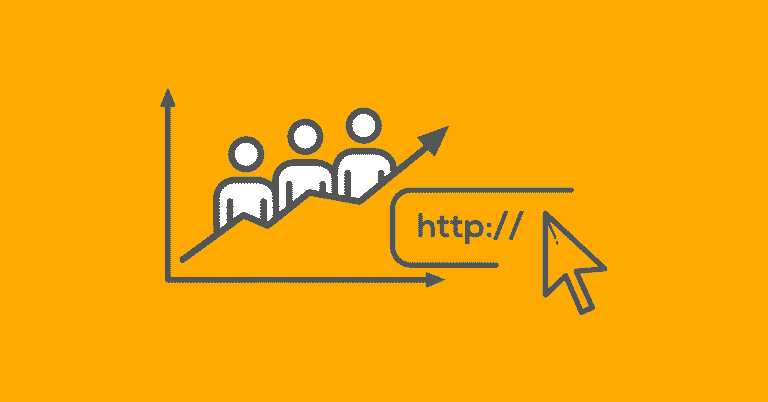The education landscape in Australia has been shifting dramatically, particularly in the wake of global disruptions like the COVID-19 pandemic. While the shift to online learning and digital classrooms became a necessity during lockdowns, the potential for Virtual Reality (VR) to transform education and remote learning in Australia is now being realized in ways that go beyond mere survival. VR has the power to take remote education to new heights, providing immersive and interactive experiences that were previously unimaginable.
In this blog, we’ll explore how VR can revolutionize Australian education, particularly in remote and distance learning, by enhancing engagement, fostering collaboration, and providing innovative solutions to challenges that traditional teaching methods face.
1. Immersive Learning Experiences: Bringing Subjects to Life
One of the most exciting benefits of VR in education is the ability to create immersive, interactive learning experiences. With VR, students can step into the heart of the subject they are studying. Imagine learning about the Great Barrier Reef and virtually diving into its ecosystem, or studying ancient civilizations and taking a virtual tour of the pyramids in Egypt. This level of immersion is simply impossible with textbooks or even traditional videos.
For Australian students, VR has the power to turn abstract concepts into tangible, engaging experiences. In remote regions where access to cultural sites, museums, and other experiential learning opportunities is limited, VR can bridge that gap. Students can “visit” locations, interact with historical figures, or even conduct complex scientific experiments in a safe virtual environment.
2. Remote Hands-On Learning: Training for Skills and Professions
In fields like healthcare, engineering, and trades, hands-on learning is crucial for developing the skills necessary to succeed. However, traditional education methods for these fields often require expensive equipment, facilities, or access to expert instructors. VR provides an affordable and scalable way to offer students realistic training scenarios.
In Australian universities and TAFE (Technical and Further Education) institutions, VR can be used to teach everything from medical procedures to mechanical repairs. For example, medical students can practice surgeries in a virtual environment, giving them the opportunity to perfect their skills before working with real patients. Similarly, engineering students can simulate designing and testing prototypes, while trades students can practice hands-on skills in a fully interactive, risk-free setting.
For remote students who may not have access to state-of-the-art labs or workshops, VR opens up new possibilities for high-quality, practical education. It provides a hands-on experience without the logistical challenges and costs of bringing students into physical classrooms.
3. Virtual Classrooms: Breaking Down Geographical Barriers
Australia is a vast country, and while urban centers like Sydney, Melbourne, and Brisbane have numerous educational opportunities, students in rural and remote areas often face barriers to accessing quality education. VR can help break down these geographical barriers by creating virtual classrooms that allow students from anywhere in the country to participate in real-time lessons, interact with their peers, and engage with teachers as if they were in a physical classroom.
Through VR platforms, teachers can hold live lessons in virtual environments where students can explore, ask questions, and collaborate as they would in a traditional classroom. This approach is particularly beneficial for students in regional areas, Indigenous communities, and international students who might otherwise have limited access to high-quality educational resources.
For instance, VR could enable remote students in rural Australia to attend a university lecture at The University of Sydney, interact with their professors, and participate in lab sessions from the comfort of their homes or local hubs. This kind of accessibility makes education more inclusive, ensuring that students from all backgrounds can receive the same level of education and engagement.
4. Enhancing Student Engagement: Making Learning Fun
One of the ongoing challenges in remote learning is keeping students engaged and motivated. Traditional online courses often rely on static content like videos, readings, and quizzes, which can lack the excitement and interactivity of in-person education. VR can overcome this by creating highly interactive and dynamic learning environments where students are not passive recipients of information, but active participants.
For example, students learning about biology in Australia could enter a virtual lab where they can conduct experiments, interact with 3D models of cells and ecosystems, or even simulate biological processes in real-time. This level of engagement can significantly improve knowledge retention and foster a deeper understanding of complex subjects.
Additionally, VR can be used for gamified learning, where students embark on educational “missions” and solve problems in virtual environments. This approach can make learning fun and motivational, particularly for younger students or those who may struggle with traditional learning formats.
5. Collaboration and Social Learning in Virtual Spaces
One of the most powerful features of VR in education is its ability to create virtual spaces where students can collaborate and interact with each other in real-time. Social learning is an essential part of education, and VR allows students to work together in shared virtual environments, regardless of their physical location.
This is especially valuable in remote learning contexts, where students may feel isolated from their peers. In VR, students can work together on projects, engage in discussions, and even participate in group activities, all while developing their collaboration and communication skills. Virtual classrooms can also support breakout sessions and peer reviews, enhancing the collaborative aspect of learning.
In Australian schools, universities, and even corporate training environments, VR can facilitate group learning across different locations. For example, students from diverse parts of Australia or overseas could collaborate on research projects, conduct joint experiments, or participate in workshops in a shared virtual space.
6. Accessibility and Inclusivity: Tailoring Education to Individual Needs
VR can also provide a more inclusive and accessible learning environment for students with disabilities. Traditional classroom settings can present challenges for students with physical, sensory, or cognitive impairments. VR has the potential to accommodate a wide range of learning styles and needs, offering individualized learning experiences that can be tailored to each student’s requirements.
For example, VR simulations can assist students with autism by offering predictable environments and scenarios that help them practice social interactions or understand complex emotional cues. For students with physical disabilities, VR can provide an immersive way to experience physical education, laboratory work, or field trips that might otherwise be inaccessible.
In Australia, where educational equity is a priority, VR can help create a more inclusive system, allowing students of all abilities to participate fully in their learning journey.
7. Cost-Effective and Scalable Education Solutions
Implementing VR in education might initially seem expensive, but it can ultimately be a cost-effective solution in the long run. VR eliminates the need for physical materials, travel expenses, and the maintenance costs associated with traditional educational tools and facilities. It also allows educational institutions to offer a wide range of programs and experiences without the need to invest in large physical infrastructures, making education more scalable.
For Australian universities and schools, VR can reduce the costs associated with field trips, lab sessions, and specialist instructors. Instead of sending students to distant locations or investing in expensive equipment, VR can offer students the same experience in a virtual setting, with lower operational costs.
Conclusion: The Future of Education in Australia is Virtual
As we move into the future, VR has the potential to completely transform the way education and remote learning are approached in Australia. From creating immersive, engaging lessons to breaking down geographic barriers and providing access to hands-on learning, VR offers a host of benefits that traditional methods simply can’t match.
By harnessing the power of VR, Australian educators can create a more dynamic, inclusive, and accessible learning experience for students of all ages and backgrounds. As technology continues to evolve, the possibilities for VR in education are limitless—opening up a world of opportunities for students, teachers, and institutions alike.
The revolution in education is virtual, and it’s happening right now. The future of learning in Australia has never been more exciting!








